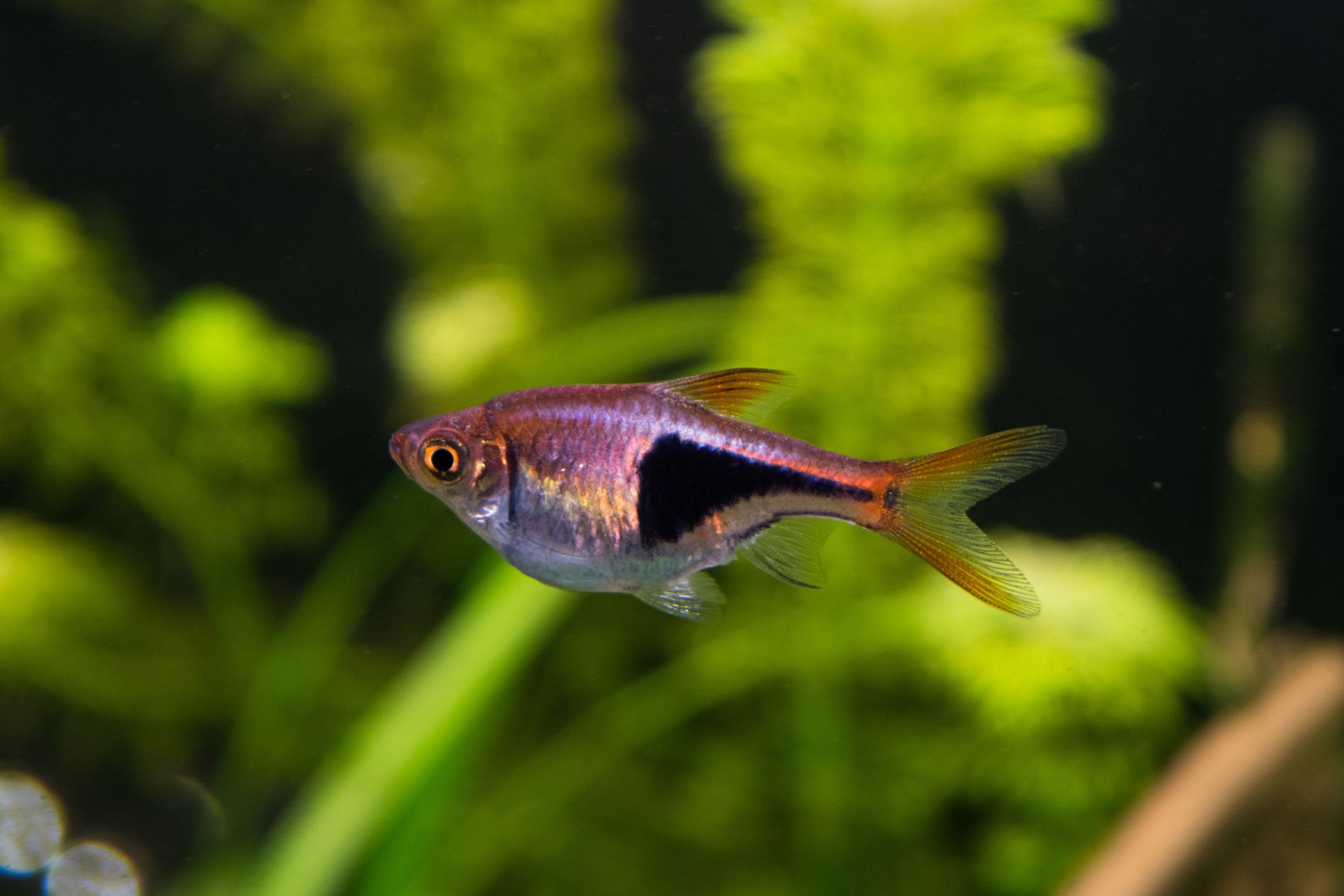Harlequin rasbora
(Trigonostigma heteromorpha)

Description
The harlequin rasbora (Trigonostigma heteromorpha) is a small fish in the family Cyprinidae. The species became an instant favorite among aquarists after its introduction in the early 1900s and is the best known and most widely kept species among the rasboras. In 1935, an image of a trio of harlequin rasboras, stamped in 14k gold, would grace the cover of the first edition of William T. Innes's classic Exotic Aquarium Fishes and would remain so through all 19 editions. The harlequin rasbora is a fish that has an approximately lozenge-shaped body, whose basal colour from the head to the caudal peduncle is an orange-pink, the exact hue varying depending upon such factors as water conditions and the original population from which the fish was obtained. The posterior half of the body is overlaid with a large, roughly triangular black marking, that tapers toward the terminal end of the caudal peduncle, and begins approximately below the midpoint of the attachment of the dorsal fin (commonly called a "black wedge"). In common with all cyprinids, the articulation of the pectoral and pelvic fins follows a familiar pattern, the pectoral fins being located immediately posterior to the operculum or gill cover, whilst the pelvic fins are located some way further back along the ventral portion of the body, in this case almost directly in a vertical line drawn through the dorsal fin. This relationship between the pectoral and pelvic fins is seen in characins as well as cyprinids, and is a feature of all the ostariophysans (fishes possessing an auxiliary mechanism for detecting sound consisting of a set of internal bones called the Weberian ossicles). The dorsal, anal, caudal and pelvic fins are all tinted red, the caudal fin being forked, with the red colour concentrated in the outermost rays, the inner section of the tail fin being more hyaline. It is possible to confuse this fish with two similar species that were indeed originally considered to be subspecies of T. heteromorpha, namely Trigonostigma espei and Trigonostigma hengeli. These fishes are more slender in body shape than T. heteromorpha, and the black marking, instead of being approximately triangular, has a horizontal stripe which tapers towards the caudal peduncle, and is greatly thickened and extended downwards below the dorsal fin. Due to this fishes with this marking are commonly known as "lamb chop rasboras" due to its perceived resemblance to the butchery cut known as a lamb chop.
Taxonomic tree:







